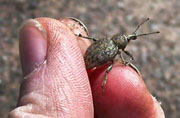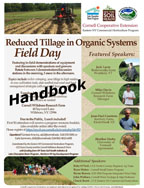 Northern N.Y.; September 17, 2018. A handbook for improving soil health in both organic and conventional vegetable, row crop, and small grain systems is now available at no charge from Cornell Cooperative Extension and partners that made possible a popular field day event that served as the basis for the handbook development.
Northern N.Y.; September 17, 2018. A handbook for improving soil health in both organic and conventional vegetable, row crop, and small grain systems is now available at no charge from Cornell Cooperative Extension and partners that made possible a popular field day event that served as the basis for the handbook development.
The Reduced Tillage Field Day Handbook is available free in the Horticulture: Vegetables section of this website.
“The field day was such a hit with the 70 people who attended and received the handbook that are making the information available on a broader basis to encourage interest in soil health practices that reduce tillage intensity and mechanical soil disturbance. Over time, this helps maintain or increase crop yields, while reducing production costs due to reduced labor, equipment wear, and fuel use,” said field day organizer Amy Ivy, a vegetable specialist with the CCE Eastern NY Commercial Horticulture Program.
Highlights and excerpts from the 107-handbook include:
- 2018-2019 New York Soil Health Priorities and Plans
- More than 60 percent of farmers who used reduced tillage or cover crops and responded to a New York Soil Health survey reported that flooding prevention, drought resilience, and less erosion resulted from those practices.
- Stacking tillage tools can save time for field preparation and reduce labor and fuel needs.
- Cultivation is typically most effective for improving weed management with small weeds in dry, loose soil.
- A project in Virginia is evaluating the potential for farmers to increase their use of cover crop rolling, which has been used successfully by individual farmers from Alabama to Pennsylvania but has yet to see widespread use in the U.S.
- High-residue conservation tillage systems involve using large amounts of cover crop residue to suppress weeds, reduce soil erosion and conserve soil moisture.
Although the event, held at the Willsboro Research Farm in Willsboro, N.Y., was targeted to meet organic growers’ expressed interest, the practices discussed in the handbook will also benefit conventional growers.
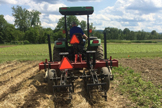
Materials are included from the field day presenters, including Bryan Brown of the New York State Integrated Pest Management Program on managing weeds in small-seeded crops; Ryan Maher of the Cornell Small Farms Program on zone tillage systems; and John Wallace, Cornell University Specialty Crop Systems, on weed seedbank management.
The resource materials in the handbook consider crimpers, rollers, the biology of soil compaction, understanding microbes and nutrient recycling, caring for soil as a living system, and the use of reduced tillage and cover crops for organic and conventional vegetable production. Other sections look at how to avoid roller crimper problems, winter-hardy cover cropping, using cover crops to convert to no-till and no-till management for organic systems.
The handbook includes information from a variety of sources including Iowa State University, the Natural Resources Conservation Service, Ohio State University, Penn State Extension, Rodale Institute, Rutgers University, the Sustainable Agriculture and Research Education Program, and the Virginia Association for Biological Farming.
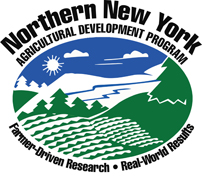 The farmer-driven Northern New York Agricultural Development Program, New York Soil Health, and Lake Champlain Basin Program sponsored the Reduced Tillage summer field day event. The Cornell Cooperative Extension (CCE) Eastern NY Commercial Horticulture Program, CCE Essex County and the Cornell University Willsboro Research Farm coordinated the field day programming.
The farmer-driven Northern New York Agricultural Development Program, New York Soil Health, and Lake Champlain Basin Program sponsored the Reduced Tillage summer field day event. The Cornell Cooperative Extension (CCE) Eastern NY Commercial Horticulture Program, CCE Essex County and the Cornell University Willsboro Research Farm coordinated the field day programming.
Funding for the Northern New York Agricultural Development Program is supported by the New York State Senate and administered by the New York State Department of Agriculture and Markets. Learn more at www.nnyagdev.org.
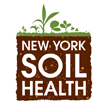 The field day topics include roller-crimping, zone tillage in high residue, in-row cultivation tools, stale seedbed and weed seed bank management strategies and grower experiences with reduced tillage on their farms.
The field day topics include roller-crimping, zone tillage in high residue, in-row cultivation tools, stale seedbed and weed seed bank management strategies and grower experiences with reduced tillage on their farms.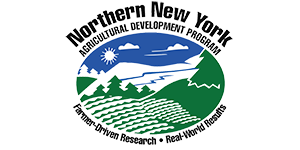 The Eastern NY Commercial Horticulture Program, Cornell Cooperative Extension of Essex County and the Cornell Willsboro Research Farm coordinated this field day with funding support from the New York State Soil Health Initiative, Lake Champlain Basin Program, and the farmer-driven Northern New York Agricultural Development Program.
The Eastern NY Commercial Horticulture Program, Cornell Cooperative Extension of Essex County and the Cornell Willsboro Research Farm coordinated this field day with funding support from the New York State Soil Health Initiative, Lake Champlain Basin Program, and the farmer-driven Northern New York Agricultural Development Program.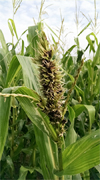
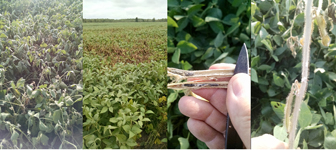 White mold discovered in Jefferson County, NY, 2017.
White mold discovered in Jefferson County, NY, 2017.